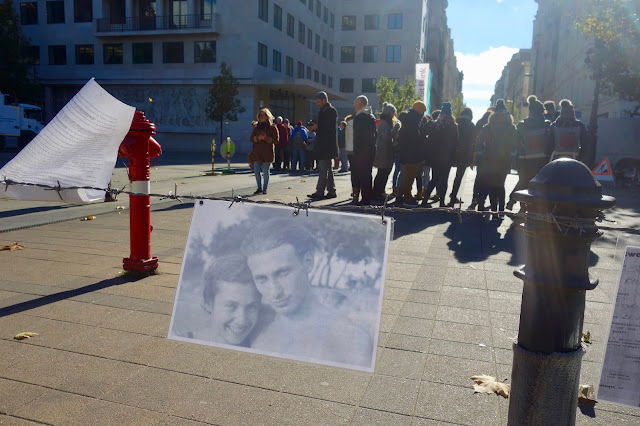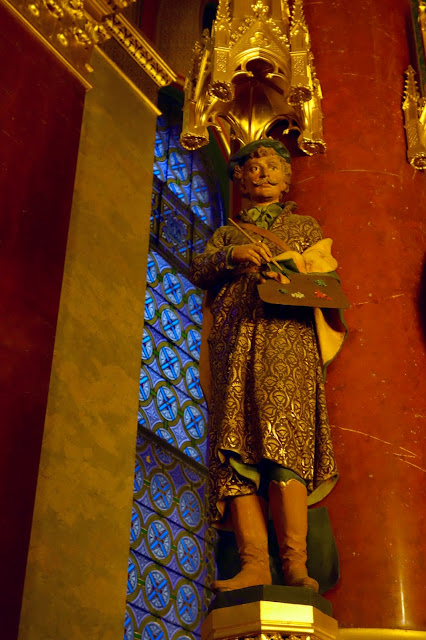We ducked into St. Stephen's on our way to get tickets for a guided tour of the Parliament building.
After leaving the church, we chanced upon a peculiar monument erected by Hungary's right wing government in 2014, the 70th anniversary of the Nazi invasion. Viktor Orban, then Prime Minister, decreed that the German imperial eagle swooping down on Gabriel, an angel especially beloved by Hungarians, honored the memory of of the occupation's victims.
Trouble is, most of those victims were Jews and the predominantly Catholic Hungary didn't behave so angelically before Germany invaded. It already had passed plenty of anti-Semitic laws, facilitating the mass deportations that followed. Orban, who ignored the growing protests while the monument was under construction, made sure the eagle and Gabriel were installed under cover of night. No fool, he delivered a reviled fait accompli to his liberal critics.
We'd seen the massive Parliament building stretching along the Danube from Fisherman's Bastion the day before.
Near the entrance, a serpent tries to strangle a lion. It's not clear who's winning.
English tours were sold out until late afternoon so after our now routine chai latte at Starbucks, we doubled back to St. Stephens. Thom wanted to shop at Scotch and Soda and G-Star Raw, just across the street.
Afterward we walked the length of Andrassy utca, one of Budapest's grandest boulevards, to Hero's Square and the Millennium Monument, completed in 1896. There's that number again.
The seven chieftains of the Magyars who conquered the Carpathian Basin surround Gabriel's pedestal.
Vajdahunyad Castle, originally constructed from cardboard to illustrate the evolution of architectural styles during Hungary's first millennium, is in the park just behind Hero's Square.
This statue depicts Gallus Anonymous, the Latin historian who put Hungary on the map a thousand years ago.
We gave our feet a rest and took the yellow line to our next stop. Budapest color coordinates its metro cars.
A rusted "iron curtain" hangs in front of the House of Terror Museum.
The museum, also built under Orban's leadership, depicts the Nazi and Soviet occupations through film clips and themed, three-dimensional exhibits in rooms where Hungarians were once tortured. Given the 40-year duration of Soviet rule, there's a decided emphasis on the evils that communism inflicted on Hungarians.
Photos were prohibited but I managed to sneak a few in rooms that documented extensive Soviet surveillance, propaganda and dozens of political martyrs who lost their lives fighting for democracy in the 1956 uprising.
If I had to do it all over again, I probably would not have toured the Hungarian Parliament building immediately afterward. Only Donald Trump could have appreciated the jaw-dropping, gilded interiors of a building inaugurated in--you guessed it--1896!
132 steps later . . .
The real work of government occurs in more modest rooms.
The building's architects made sure that politicians had a place to rest their cigars before smoking was banned in the 21st century.
Parliament's Gothic exterior looked even prettier at night.













































No comments:
Post a Comment